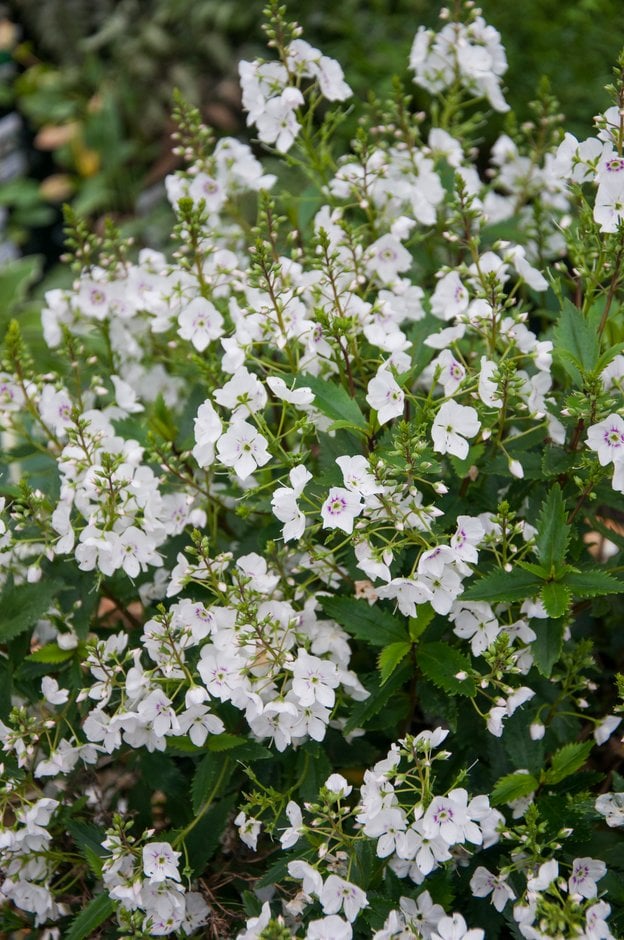Veronica catarractae 'Avalanche'PBR (P)
parahebe 'Avalanche'
A compact, semi-evergreen to evergreen shrub forming low, spreading mounds of dark green, coarsely serrated leaves to 40cm tall. Saucer-shaped white flowers with small green eyes surrounded by a ring of small purple blotches are borne on short spikes in summer
Size
Ultimate height
0.1–0.5 metresTime to ultimate height
2–5 yearsUltimate spread
0.1–0.5 metresGrowing conditions
Moisture
Moist but well–drained, Well–drainedpH
Acid, Alkaline, NeutralColour & scent
| Stem | Flower | Foliage | Fruit | |
| Spring | Green | |||
|---|---|---|---|---|
| Summer | White | Green | ||
| Autumn | Green | |||
| Winter | Green |
Position
- Full sun
Aspect
South–facing or West–facing
Exposure
ShelteredDrought resistance
Yes Hardiness
H4Botanical details
- Family
- Plantaginaceae
- Native to GB / Ireland
- No
- Foliage
- Evergreen
- Habit
- Matforming
- Genus
Veronica can be annuals, perennials or sub-shrubs with paired leaves and small flowers usually in terminal or axillary racemes or spikes
- Name status
Accepted
How to grow
Cultivation
Grow in well-drained soil in full sun with shelter from cold drying winds
Propagation
Propagate by seed in containers in cold frame as soon as ripe or in spring or propagate by semi-ripe cuttings in early or midsummer
Suggested planting locations and garden types
- Coastal
- Gravel garden
- Rock garden
- City and courtyard gardens
- Cottage and informal garden
- Flower borders and beds
- Garden edging
- Banks and slopes
- Ground cover
Pruning
No pruning required
Pests
May be susceptible to aphids
Diseases
May be susceptible to downy mildews, fungal leaf spot, fungal rot, Phytophthora and sometimes honey fungus
Love gardening
Sign up to receive regular gardening tips, inspiration, offers and more
View our Privacy Policy
Get involved
The Royal Horticultural Society is the UK’s leading gardening charity. We aim to enrich everyone’s life through plants, and make the UK a greener and more beautiful place.

